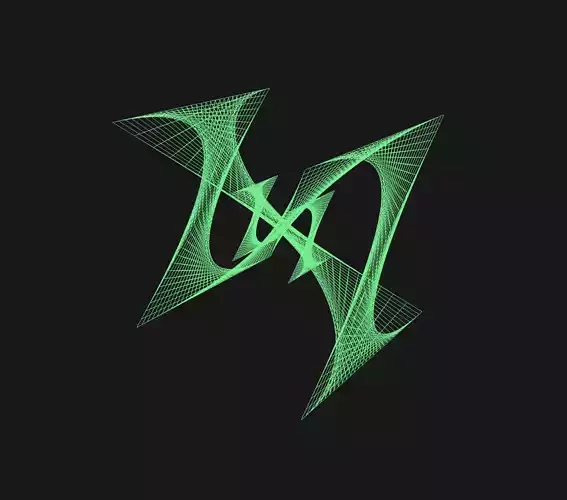
4D Hypercube -Firs t of its Kind - Collector Item Low-poly 3D model
Vertices: 5664Triangles: 1888[Start: 0, Count: 5664]
One of a kind, this is the first correct Hypercube that my application has been able to render. What my system does is provide a 3D Environment for theoretical shapes beyond 3D can be seen and interacted with. Speciifically showing teachers, scientiest, engineers and computer enthusiasts exactly how these thing fold out beyond what we can visually and mentally perceive.
This is a first for current modeling, no one has depicted a tesseract as seen here, let along render it moving through and beyond 3D space. Everyone of these object for sale or lease WILL reshape how we understand the cosmos and everything here on this rock. If you watch the video you can see how these object transcends and extends over dimensional shifts to conform to new shapes and components. I have included three different perspectives for this, a wire frame mode, a textured (standard green) and a flattened frame (hour glass). This is the one and only sample where I will be offering multiple models in one purchase. All remaining will be based on static models, not as scene on my platform videos.
There is no parameters or tracking infomration included in this sale, only what the models wiil identify.
First in class of many, jump on the price now before they go up, I am offering this a relatively good price based on its rarity but I am anticipating this will not go long.
Vertices: 16Edges: 32
Faces: 24
Triangles: 0 (wireframe only)Mathematically, a hypercube consists of 16 vertices, 32 edges, 24 square faces, and 8 cubic cells. Each vertex connects to exactly four edges, creating a perfectly symmetric structure that maintains the cube's essential properties while operating in four dimensions. The mathematical notation {4,3,3} describes its Schläfli symbol, indicating the specific geometric relationships that define this remarkable polytope.
The benefits of studying hypercubes extend far beyond pure mathematics. Understanding higher dimensions enhances spatial reasoning abilities, improves problem-solving skills, and develops abstract thinking capabilities. These cognitive benefits transfer to fields like computer graphics, physics, engineering, and data visualization, where multi-dimensional thinking proves invaluable.
In modern applications, hypercubes appear in computer science algorithms, quantum physics models, and advanced visualization techniques. They help us understand complex data structures, optimize network topologies, and explore theoretical physics concepts like string theory and spacetime geometry.











